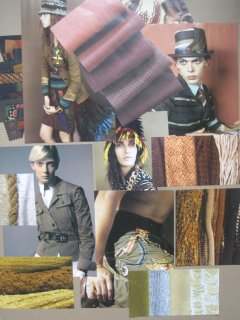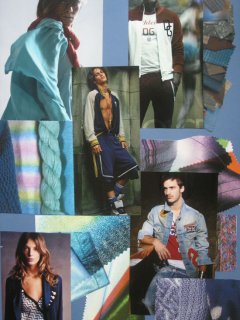PARIS — Fabrics took on an organic tone at Première Vision, which wrapped up its four-day run here on Saturday.
After seasons of bright, pop colors and feminine prints and patterns, themes for spring 2006 were more natural
— most importantly in color, but also in texture and pattern.
Others said business was either stable or had picked up slightly.
“The climate continues to be more positive,” said François Damide, president of Solstiss/Bucol in the U.S.
“Because we are a niche manufacturer, price has not really been an issue for our customers.”
Piero Giachi, owner of Italian knit mill Jackytex, said creating a more focused niche is key going forward.
“Right now, business is difficult, but this only reaffirms my belief that we need to concentrate on more custom work,” he said.
“It’s hard to stay in the middle. You must either do everything or just focus on a group of things very well. Our customers want special things.”
As for trends, designers shopping the fair noticed less of the in-your-face color palette they saw last spring.
“There is definitely an earthier palette this time around” Posen said. “ I love all the washed looks.”
For designer Charles Nolan, color for the season will be softer.
“The neutral palette I’m seeing here is quite interesting — there’s still color, but it’s a little off,” Nolan said.
“The natural, antiqued feel takes the edge off, which looks very fresh to me.”
Shades of ecru (the “new white,” said designer Lisa Kulson), oatmeal and straw were prevalent,
as were different tones of brown and deep red. Darker hues such as ink blue, purple and black
were also part of the more sophisticated mix, while yellow was the strongest among the brights.
At Crespi, natural fibers such as cotton, hemp and linen yielded organic results in basket weaves, twills and chintz looks,
many of them in tones of beige and brown. Luigi Boggio Casero’s collection was a sophisticated mix that included
an ivory tonal chevron made of a cotton blend as well as an abstract patterned tweed in black, blue and ivory.
Meanwhile, Dondi showed gauzy and transparent jerseys in cotton and linen.
“Lightweight continues to be important not just for spring, but all year long,” said owner Lorella Dondi.
As part of the more organic approach, several mills offered slubby linens and cottons, some with prints.
For French designer Isabel Marant, these looks felt new.
“I usually do not like linen and I am a bit fed up with normal cotton,” she said.
“But this season, I am really attracted to linens and cottons that have an uneven texture to them.”
For Kulson, shopping at Crespi, the direction was also more rustic.
“I’m really liking all the slub and seersucker textures,” she said.
“Overdyeing yarn-dyes, plaids, linens and batistes also make for interesting textures.”
Raffia and raffia-like yarns also were mixed with a variety of fibers for a more artisanal feel.
At Alphalace, straw-like embroidery gave an otherwise traditional lace a rustic edge.
At Luigi Verga, raffia was mixed with silk on abstract patterned weaves that were featured in chambray, dark blue and beige.
Exhibitors showed patterns and prints with an organic feel as well as themes that were African in nature.
At Canepa, looks included abstract botanicals and a vibrant giraffe-like print in yellow and brown,
while at Ratti, dark-colored batiks came saturated in browns, greens and other earthier tones.
Mantero channeled India in its Goa Party group, where one jacquard whimsically featured colorfully placed magic mushrooms.
Also in line with the natural theme was perhaps the biggest trend in pattern:
*Palm tree and leaf motifs that were seen throughout the show in prints as well as jacquards.
Mahlia showed a kitschy version in bright orange and blue, while Solstiss showed the motif on lace
in a metallic blue and silver combination.



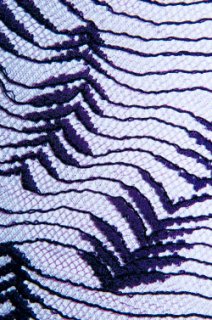
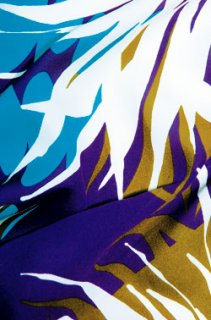
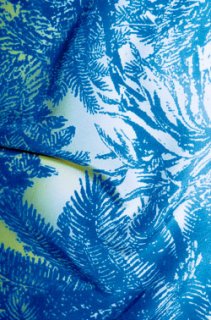
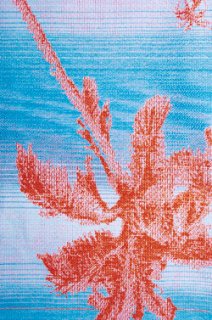
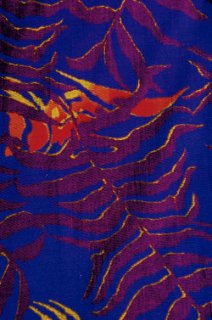
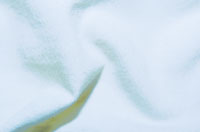
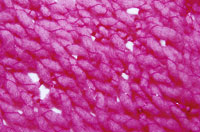



 i like the blue things tho,what kind of lengths do you think we are going to see on skirts for example i think we are going to continue the bubble skirts or if not theyre going to be knee length but very summery
i like the blue things tho,what kind of lengths do you think we are going to see on skirts for example i think we are going to continue the bubble skirts or if not theyre going to be knee length but very summery